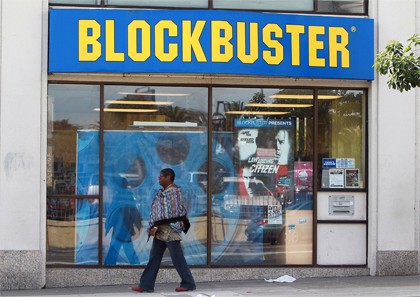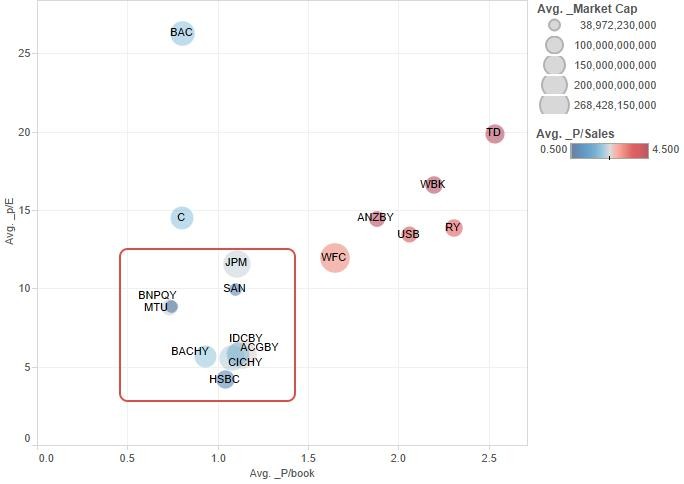Great expectations but beware of value traps
Post on: 18 Апрель, 2015 No Comment

17 December 2007
Paul Ehrlichman, global chief investment officer of Brandywine Global, talks to Simon Hildrey.
Q. Is America already in a profits and earnings recession?
Rio Tinto rejects Glencore merger talk
In the third quarter of 2007, S&P 500 companies reported their fifth worst quarterly decline since 1945 — a fall of 8.5%. US Steel, for example, suffered a fall in earnings of 35% in the third quarter. Competitors and customers will conspire against companies. For example, makers of copper pipes for water have been hit by customers switching to plastic piping. This undermines their margins and pricing power.
Merrill Lynch and UBS have done a good job of identifying the slowdown in earnings and profits. There are several signals of tougher market conditions, such as a leading Swiss bank having to borrow money at a higher rate than I can get. Citigroup has had to pay 11% for capital through convertibles and shares while UBS has had to pay about 9%.
The peak of the last cycle was marked by the AOL and Time Warner and the Vodafone and Mannesmann corporate deals. Now we have BHP Billiton trying to buy Rio Tinto at seven times sales and 35 times earnings. We cannot make the maths work. This comes at a time when the prices of certain commodities like copper, zinc and lead have been falling. If 2000 presented growth traps, then the current market offers value traps among cyclical sectors and some emerging markets.
Q. Do you think Federal Reserve rates will be reduced much further to stimulate the economy?
A. We do expect Fed rates to be reduced a lot closer to 3% than the current 4.25%. The markets are expecting rates to come down to try to boost the economy. The speed of the recovery in the economy, however, depends on how quickly it takes the necessary pain. The best way for the [American] government to achieve this is to lower Fed rates and not intervene so that extra liquidity can flow to the strong companies and individuals. Extended pain will lead to stagnation.
Q. Is there a risk of stagflation?
A. We do not believe inflation is a risk to the Fed’s ability to cut rates, and thus a threat to the economic recovery. Commodity and input prices will moderate. There are concerns about inflation but we do not think this is a major issue. Oil is more difficult to evaluate because its price is influenced by speculators. The fall in other prices will enable the Fed to continue reducing rates. Some companies will benefit from lower input, costs, including battery companies that import nickel.
Q. American exports are rising because of the weak dollar. Will this growth offset the domestic economic slowdown?
A. US exports are being boosted by the weak dollar, but this will only partly offset the slowdown in the domestic economy. In 1991 rising exports only offset the domestic slowdown by 1%. We would only expect export growth now to reduce the impact of a domestic slowdown by 0.5% to 1%. There is talk of economies like China and India decoupling from America, but we do not believe this is happening.
Q. Have the markets priced in an economic slowdown?
A. Just as the credit markets underestimated the credit problems, so analysts have been slow to realise the fall in earnings and profits. We believe the economic environment will be more challenging next year than analysts are forecasting. Andrew Smithers [of Smithers & Co in London] has shown that 85% of profits growth is due to leverage and inventory changes. The quality of earnings has been deteriorating and is not comparable with 2003 and 2004.
Q. Which sectors are most affected?
A. The financials sector, of course, has been most badly affected so far. Washington Mutual, for example, went from having 1% of its portfolio of mortgages in subprime to 55%. It is difficult to expand a portfolio of subprime from 1% to 55% in three years but Washington Mutual managed it. Last week, analysts downgraded consensus expectations for growth in Washington Mutual’s earnings from $2 a share to $0.50 but we feel this is still too high.
Another example of analysts’ expectations being too high is Capital One. Consensus expectations are for earnings to rise from $5 a share to $8.30 in 2009. I do not see how consumer spending will be strong enough to suggest a large lender can enjoy a two-thirds growth in earnings.

The most unrealistic expectations are to be found in the cyclical stocks, given that earnings forecasts for the financial sector have been reduced. There are cyclical stocks that are being priced for a growth in earnings and profits when they are already at record levels. There is no room in the share prices for a slowdown. It is true that stockmarkets can rise when economies slow, but not from these levels of expectations.
Take Cascade Corporation, for example. Its share price has fallen from $84 to $50. It had been expensive at three times price to book. It was priced to perfection after its sales had grown 38% in China and 26% in Europe because of the weak dollar. It is, however, facing higher input, transport and labour costs. Cascade is having to compete for orders so its margins are falling.
Analysts have attributed falling earnings to one-off and short-term events such as write-offs. But analysts have been underestimating earnings and profits growth over the past five years and now they are overestimating earnings and profits.
Consensus operating earnings growth for S&P 500 companies for next year are 14%. This is too high given the environment we are in. Assuming lower economic growth, the index is on a price to earnings ratio of 23 times rather than 14 times. We believe earning disappointments will rise next year.
Q. Where are the investment opportunities?
A. Many of the companies we expect to outperform have been laggards in recent years. These include consumer staples, consumer durables, telecoms and technology. There will be a rotation in the leadership of stocks.
We like stocks where earnings growth may move between 8% and 12% and not between a large negative and large positive growth. We are targeting companies that can generate profit growth through cost-cutting and products rather than raising their prices.
A stock we like is Peabody Coal. It is benefiting from the fact that demand for coal is growing 10 times faster than for oil. With a market capitalisation of $15.5 billion, we believe Peabody Coal is cheap compared with Exxon Mobil with a capitalisation of $506 billion.
PAUL EHRLICHMAN
is global chief investment officer of Brandywine Global, based in Philadelphia. He joined Brandywine in 1988 and was previously assistant vice-president and portfolio manager at Provident Capital Management from 1984. Ehrlichman was a securities analyst at First Pennsylvania Bank between 1983 and 1984.














